The types of people, creatures, and environments you encounter while exploring tell you a lot about the kind of world you’re playing in. As a DM, it’s easy to just dump information upon your players, expecting them to take in all of the intricacies of your setting at once—but in practice, this sort of expository worldbuilding rarely sticks. Even attentive players will probably forget all but the most important details, and most players will get bored of being talked at and check out completely.
We discussed why subtle worldbuilding is so powerful back in Worldbuilding with Style and Subtlety. Today, let’s examine another useful method of subtle worldbuilding: using encounters, the most fundamental building block of the Dungeons & Dragons experience, to tell stories about your setting. Worldbuilding tag.
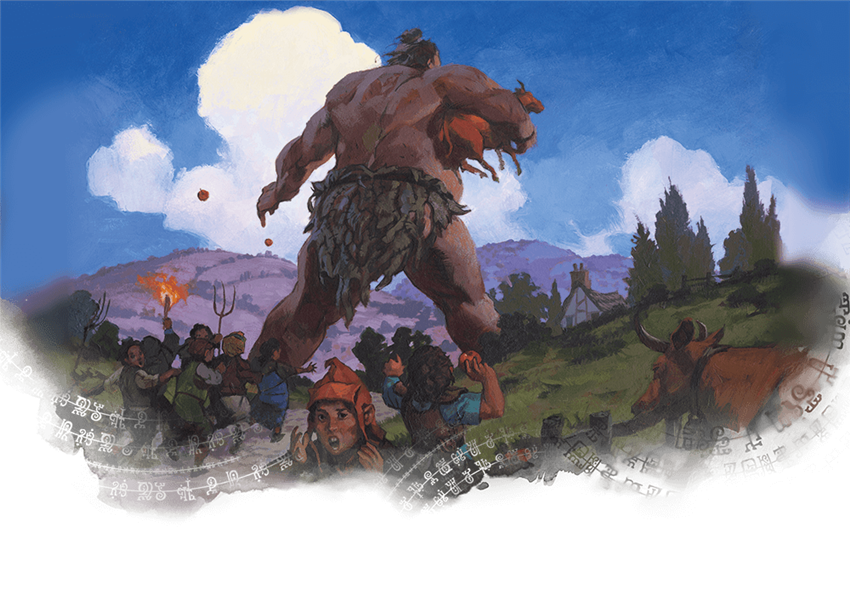
Our Terms
Before we get started, let’s quickly define some terms. I’ll use these words and phrases throughout the article, so please refer back here if you’re ever confused. You’ll probably be familiar with them already if you read the previous article in this series.
- Worldbuilding: the act of creating any sort of noun that defines your fictional world. Worldbuilding happens twice, first in creation, and then in communication.
- Noun: anything in the broad topic of people, places, and things, ranging from things as dramatic as legendary heroes to capital cities to ancient artifacts, to things as simple as a nation’s regional cuisine, the type of boats used for kelp-harvesting in a coastal town, and so forth.
- Worldbuilding Creation: the first phase of worldbuidling, when a DM creates facts about their world, often in private
- Worldbuilding Communication: the second phase of worldbuilding, when a DM shares the facts they created about their world with players, who synthesize this information into something new—either through miscommunication and misunderstanding, or from collaborative discussion about those facts
- Direct Communication: when a DM tells their players about the world, often making details explicitly clear
- Indirect Communication: when a DM shows their players worldbuilding elements, allowing players to interpret them and draw their own conclusions
What is an Encounter?
The encounter is the most fundamental story unit in a D&D game. An encounter is analogous to a scene in a traditional storytelling medium like a novel, a play, or a film. And while the word “encounter” is typically synonymous with a fight, there are many different kinds of encounters. The three pillars of a D&D adventure are exploration, combat, and social interaction, and each one of these pillars can be represented by an encounter.
The only mandatory element that must appear in an encounter, no matter which of the three pillars the encounter is a part of, is that the player characters encounter something controlled by the Dungeon Master. In other words, an encounter needs the characters to come into conflict with something else, and they need to find a way to overcome that obstacle and resolve the conflict. Here are examples of encounters along all three pillars.
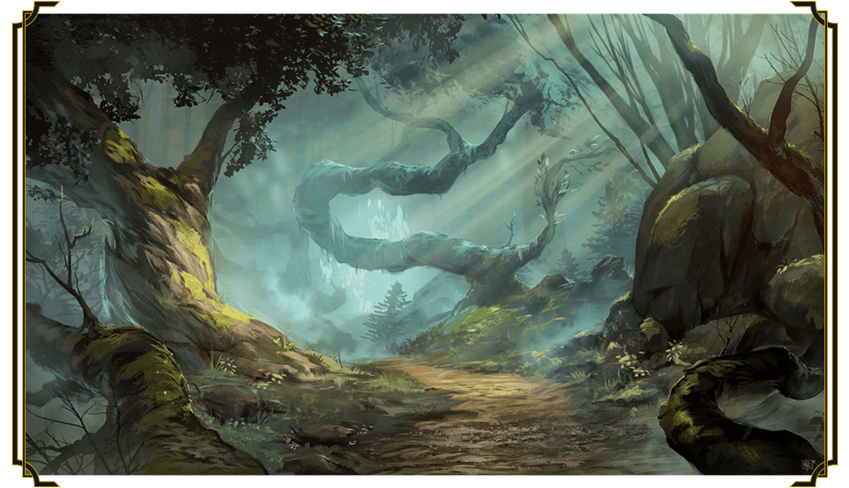
Combat
This type of encounter needs no explanation. When the word “encounter” is mentioned in terms of D&D, combat is what springs to most veteran players’ minds. The phrase “encounter design” is used in both video games and tabletop games to mean how creatures and terrain are arrayed to challenge the players in combat. This encounters often take place at short range, though some DMs may have combat encounters erupt at great distance, beginning with a long-range volley of longbow fire, forcing characters to scramble for cover.
Social Interaction
We have all had social interactions in real life. We also all have experience with social interactions in which we want something, and the person we’re talking with doesn’t want us to have it. And the other way around. This conflict is the basis of a social encounter in D&D. A friendly chat isn’t really a social interaction encounter, because neither participant in the conversation wants something from the other.
In some ways, social interaction encounters are the most complex type of encounter in D&D, and in other ways, they’re the simplest. D&D gives guidance on how to roleplay social scenes in the Basic Rules, but it doesn’t have many hard rules for social interaction in the way it has lots of rules for combat—though contrary to popular belief, there is a clear, rules-driven framework for social interactions found in the Dungeon Master’s Guide. It’s just not as in-depth as the rules for combat, and it’s contained exclusively within the game’s least-read core rulebook.
Social interaction encounters often take place between one player character and one NPC, but they can also take place in basically any combination of PCs and NPCs—between the entire party and one NPC, between one PC and several NPCs, and so on, and so on. The one constant in a good social encounter must be conflict. One person wants something (or several somethings), and another person doesn’t want them to get it, or that other person wants something else that is at odds with what the first person wants.
Exploration
“On a large scale, [exploration] might involve the characters spending a day crossing a rolling plain or an hour making their way through caverns underground. On the smallest scale, it could mean one character pulling a lever in a dungeon room to see what happens.”
—Introduction, D&D Basic Rules
Exploration encounters often take two distinct forms. Large-scale exploration and small-scale exploration. Large-scale exploration requires the characters to deal with the world and the landscape at large. It’s hard to condense large-scale exploration into digestible encounters, not in the way we can easily categorize tête-à-tête social interaction encounters or party-versus-monsters combat encounters. That’s because exploring a large swath of land is typically a framework for smaller encounters. Your party might “encounter” a mountain range that blocks their passage between the Sword Coast and the deserts of Anauroch, but that mountain range is really just an environment for other types of encounters—fights or parleys with mountain bandits, or small-scale explorations involving treacherous mountain paths.
Small-scale exploration encounters are more manageable, both for players and DMs. They typically involve discrete locations, making it easier to understand how a problem might be solved. These exploration encounters involve player characters overcoming unthinking, unfeeling obstacles. They might be natural, like the Fellowship of the Ring trying to pass over the mountain Caradhras and facing a blizzard summoned by Saruman, or artificial, such as a concealed pit trap with poison spikes at the bottom, cleverly concealed by the minions of Acererak in the Tomb of Annihilation. These encounters often revolve around characters making decisions about which path to take, making ability checks to overcome obstacles, and making saving throws.
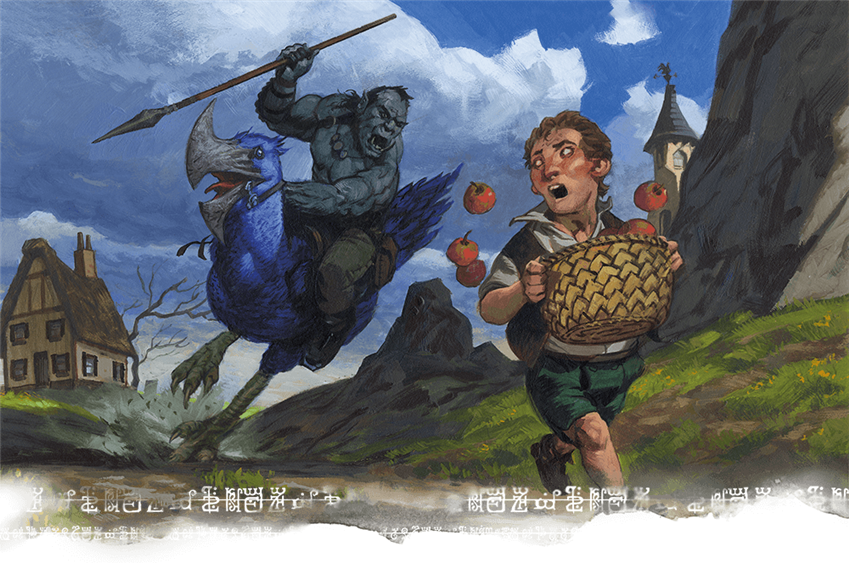
Worldbuilding through Encounters
You may have realized that all three of these encounter types can blend together. A social situation gone wrong can quickly turn into a battle, and a battle can just as easily turn into a tense negotiation with some well-placed words and a good Charisma (Persuasion) check. Likewise, an overland exploration encounter could become a frantic, running skirmish when an orc warband sees the party from atop a hill a thousand feet away and starts charging—or if the party sees the orcs first, and then enters a tense stealth-based exploration encounter as they try to sneak by unnoticed.
Even though these different encounters involve the characters facing different types of problems, be they starving monsters, intelligent humanoids, or unfeeling geography, they all have something in common. They’re all a puzzle that the characters (or their players) must understand and solve. Some puzzles are as simple as “reduce the monster’s hit points to 0,” but even the most mundane combat challenge can be wrinkled with terrain, damage resistances, or unique mechanics like weak points. Your goal is to get the players to think deeply about the problem they need to solve—and you can use this opportunity to “trick” them into caring about your setting by inserting cool setting details into each encounter for them to think about.
It’s not really a trick, though. It’s just good, subtle worldbuilding. Let’s look at how you can use different types of encounters to immerse your players in your campaign setting.
Immersive Exploration Encounters
Inserting mysterious locations or items into a wilderness or dungeon exploration is one of the most common ways for Dungeon Masters to subtly add depth to their world. At the highest level, biomes and climates are the first way a DM communicates anything about the campaign world. The bleak environments of Ravenloft are wildly different from the rolling green fields of the Sword Coast, which are in turn wildly different from the towering skyscrapers of Sharn.
A rewatch of the Lord of the Rings films will give you ample inspiration for environmental worldbuilding, from the imposing statues of Amon Hen to the vast and crumbling halls of Moria. This environmental design tells your players not just about the place they’re in, but about the people who created such things. Of course, not all environmental worldbuilding elements need to be ruins from a bygone era, like they so often are in Lord of the Rings and the countless fantasy stories that drew inspiration from it. What about markers and monuments left by people who are still living, or who only recently were killed. You can use graffiti on city walls to show what the downtrodden of a city value and fear. Or, you can subtly telegraph the powers of a monster by decorating its lair with grisly trophies of past kills—a manticore leaves snapped bones stripped clean of flesh, with dozens of shed spines nearby, whereas a salamander might post the charred corpses of its foes on stakes as a warning to those who would threaten its colony.
Likewise, when designing a dungeon and stocking it with traps, think of what kind of traps your dungeon creators would use. Bandits might use straightforward pit traps, whereas cunning thieves employ trip wires set to collapse a ceiling, and evil mages plant glyphs of warding. This sort of thoughtfulness might not be noticed consciously, but it helps your players intuitively understand the kind of danger they’re getting themselves into.
Immersive Social Interactions
Social encounters can be the hardest to use as a vehicle for subtle worldbuilding. The trick is that NPCs are a great way for the Dungeon Master to deliver raw information into the players’ heads in the form of a huge infodump. This can be useful, thanks to its sheer efficiency, but players are more receptive to information when they’re actively engaged in this story. The best way to lose player engagement is to start talking at them, and the best way to win it back is to have a conversation with them.
Rather than using NPCs as a high-density information dumping service, use them to deliver sparse information couched in subjective personal desires. Everyone wants things, everyone believes in things, and all of these wants and beliefs color how people interact. Think of your NPCs as people first and also one piece of interesting worldbuilding that you can communicate through them. It’s better if they don’t say it straightforwardly, but allow the players to infer it. In Dragon Age: Origins, the elves of Thedas are confined to a slum called the Alienage in the capital city of Denerim. The game goes to great lengths to tell you that elves are second-class citizens in Thedas, but they also let you see it firsthand through interactions between oppressors and the oppressed. Those moments are the most memorable.
Roleplaying dozens of NPCs in a believable manner is a challenging task, but it’s a vital skill for any DM who wants to portray a nuanced and plausible game world to learn. Being able to think quickly and improvise NPC motivations and desires on the fly is the best way to become good at this, since your biggest constraint as a Dungeon Master is the amount of time you have to (or want to) spend prepping for each session. The only way to become a better improvisational roleplayer is to practice, and reading Roleplaying 101: Improvising Your Way to Victory will give you a few foundational skills that will help you get started.
Immersive Combat Encounters
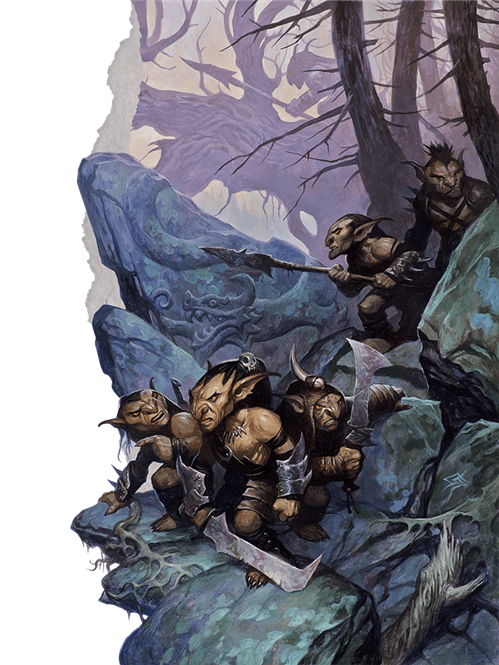 The best way to tell your players about the types of creatures that live in your world is to show them. Think about the kind of people and creatures that live in each region of your world, and create your own encounter table, like the Random Encounter Tables in Xanathar’s Guide to Everything. Rather than tuned to a specific environment, though, these tables can be fine-tuned to suit any given nation or region, regardless of environment.
The best way to tell your players about the types of creatures that live in your world is to show them. Think about the kind of people and creatures that live in each region of your world, and create your own encounter table, like the Random Encounter Tables in Xanathar’s Guide to Everything. Rather than tuned to a specific environment, though, these tables can be fine-tuned to suit any given nation or region, regardless of environment.
If you have qualms about using random encounters in your games, an encounter table is still useful even if it’s not used randomly. When creating a dungeon, you can roll on a region’s encounter table to create a few encounters with different types of creatures. Then, it’s up to you to create a story that links them together. For example, I’m creating a hilltop fortress and need to fill it with creatures that want to defend it. I’ll roll three times on the Hill Encounters (Levels 1–4) table, and see what I get.
I rolled:
- 54 (1 giant elk)
- 12 (2d6 tribal warriors)
- 96 (1d3 trolls)
Let’s throw together a quick story here. The troll is the strongest creature here, so let’s put it in charge. She can be a powerful warrior named Deltharl, and she rides the giant elk as a mount. The tribal warriors are a tribe of hill dwarves that have been enslaved by the troll. Let’s say that this region has hill dwarves who know about this hilltop fortress and avoid it. They call the place Trolltusk Gaol. This might also imply that there are other dwarven tribesfolk in the hills, and other troll fortresses.
Now I have a perfectly good location to place on my map of the hilly region of my campaign setting. If I do this three or four more times, then I have a well-developed sandbox for my players to explore! As the players explore, they’ll learn about the dwarves, the trolls, and maybe even come to the conclusion that there are other giant animals here, too. This is worldbuilding! Even though it doesn’t concern the fate of the cosmos, it’s still valuable, and the players can instantly engage with it.
What types of encounter-first worldbuilding have you done? Tell us about your campaign setting in the comments!
Create A Brand-New Adventurer Acquire New Powers and Adventures Browse All Your D&D Content
 James Haeck is the lead writer for D&D Beyond, the co-author of Waterdeep: Dragon Heist, Baldur's Gate: Descent into Avernus, and the Critical Role Explorer's Guide to Wildemount, a member of the Guild Adepts, and a freelance writer for Wizards of the Coast, the D&D Adventurers League, and other RPG companies. He lives in Seattle, Washington with his fiancée Hannah and their animal companions Mei and Marzipan. You can find him wasting time on Twitter at @jamesjhaeck.
James Haeck is the lead writer for D&D Beyond, the co-author of Waterdeep: Dragon Heist, Baldur's Gate: Descent into Avernus, and the Critical Role Explorer's Guide to Wildemount, a member of the Guild Adepts, and a freelance writer for Wizards of the Coast, the D&D Adventurers League, and other RPG companies. He lives in Seattle, Washington with his fiancée Hannah and their animal companions Mei and Marzipan. You can find him wasting time on Twitter at @jamesjhaeck.
 James Haeck is the lead writer for D&D Beyond, the co-author of Waterdeep: Dragon Heist, Baldur's Gate: Descent into Avernus, and the Critical Role Explorer's Guide to Wildemount, a member of the Guild Adepts, and a freelance writer for Wizards of the Coast, the D&D Adventurers League, and other RPG companies. He lives in Seattle, Washington with his fiancée Hannah and their animal companions Mei and Marzipan. You can find him wasting time on Twitter at @jamesjhaeck.
James Haeck is the lead writer for D&D Beyond, the co-author of Waterdeep: Dragon Heist, Baldur's Gate: Descent into Avernus, and the Critical Role Explorer's Guide to Wildemount, a member of the Guild Adepts, and a freelance writer for Wizards of the Coast, the D&D Adventurers League, and other RPG companies. He lives in Seattle, Washington with his fiancée Hannah and their animal companions Mei and Marzipan. You can find him wasting time on Twitter at @jamesjhaeck.








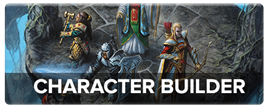
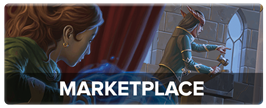
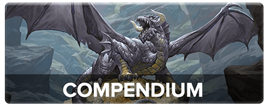
-
View User Profile
-
Send Message
Posted Apr 15, 2020First comment!
Really good post! Helps when building hombrew world.
-
View User Profile
-
Send Message
Posted Apr 15, 2020Really cool, love it. Nice that there are lots of posts for DMs. But please restart the Class 101. Nice work.
-
View User Profile
-
Send Message
Posted Apr 15, 2020Helpful post, but I don’t get why you specifically say that there’s a guide to social encounters in a the least popular DND book, and don’t actually, say, put it in this article. You’re essentially saying it’s there, and it’s in something few people want to buy, so you’ll mention it to make people buy it?
That being said, it’s a decent marketing strategy, but a lousy thing to do to people. Otherwise, it’s a good article.
-
View User Profile
-
Send Message
Posted Apr 15, 2020This is really good! Thank you for doing this. I'm planning to start a campaign, and this is a good thing to start out with!
-
View User Profile
-
Send Message
Posted Apr 15, 2020So useful
-
View User Profile
-
Send Message
Posted Apr 15, 2020After 4 hours, this many positive comments! Mine too.
-
View User Profile
-
Send Message
Posted Apr 16, 2020Who the heck doesn't know what a noun is
-
View User Profile
-
Send Message
Posted Apr 16, 2020We're all taught in school that a noun is a "person, place, or thing," but providing a little bit of context can make grasping the content of this piece easier. The context provides scale; we could be talking about anything from the highest king to the lowliest commoner, or the grandest mountain to the smallest hill.
-
View User Profile
-
Send Message
Posted Apr 16, 2020I assume this should be "cleverly"?
This is also one of my preferred suggestions on how to foreshadow the strength of an enemy - not just how it attacks/what kind of abilities it has, but simply a display of how powerful it is. One way to foreshadow that is to show that even powerful enemies the party's struggled to defeat have been easily cast aside by a much stronger foe; another is to have the enemy kill an allied NPC, though that may be more likely to cause the party to rush into a fight, even if they can't win.
There's some weird spacing here:
Rather than a single space between "to" and "tell", it seems that there are actually 3 spaces there...
Good article! I think encounters are an oft-neglected part of worldbuilding and storytelling. Fights and other encounters shouldn't be a break/separate from the story you're all telling together, but rather part of it in some way.
-
View User Profile
-
Send Message
Posted Apr 16, 2020Perhaps it's least read because players assume it's only for DMs? And there tend to be 4-6 players for every DM?
-
View User Profile
-
Send Message
Posted Apr 16, 2020How does one become a freelance writer for Wizards and D&D and what does it involve?
-
View User Profile
-
Send Message
Posted Apr 16, 2020I think this is absolutely the case.
-
View User Profile
-
Send Message
Posted Apr 16, 2020Thank you for this article! Great followup to the subtle world building article.
Personally, I am doing my best to get away from "lore-dumping" my players and trying to get them more engaged. This helps a lot! Thank you!
-
View User Profile
-
Send Message
Posted Apr 17, 2020This is both inspiring, useful information, yet overwhelming somewhat. Like- as a DM, I'm doing it all wrong. But, I suppose some changes are necessary.
-
View User Profile
-
Send Message
Posted Apr 17, 2020Yes please more class 101
-
View User Profile
-
Send Message
Posted Apr 17, 2020One of the best articles I've seen from you, James. Nicely done.
-
View User Profile
-
Send Message
Posted Apr 17, 2020Thank you! That means a lot to me. I would say that a dialogue scene between two player characters isn't an encounter. It might have conflict, drama, all of the good qualities of a scene in another medium, but it isn't an encounter unless the players overcome a challenge set by the Dungeon Master. I'm open to counterargument, but I'm firm in this belief.
-
View User Profile
-
Send Message
Posted Apr 18, 2020I think that section might be a little too large fit in, and leave room for the rest of the article, but if you’re looking for a decent framework immediately available, the old disposition rules still work pretty well.
Passive Insight works perfectly for natural resistance to being influenced. Trusting, “friendly” creatures have a Disadvantage (-5) on this resistance, while a guarded “hostile” has Advantage (+5).
A great rule in old editions was that the target of a successful Intimidation Check is more hostile and resistant to influence in the future. Although, you have to be a bit more judicious with the complimentary rule about successful Persuasion Checks lowering guards, for it to make sense.
I like this, because it leaves the checks themselves open for Advantage and Disadvantage, depending on exactly what’s said.
-
View User Profile
-
Send Message
Posted Apr 18, 2020What does this have to do with the original quote? None of what you said has anything to do with buying the DMG, or advertising it. Just saying.
-
View User Profile
-
Send Message
Posted Apr 18, 2020I beg your pardon? I talked about frameworks for social encounters, and the regret that such rules were not immediately available in the article itself, which was the subject of original post.
Perhaps I was too forwards in volunteering older edition rules that I like, but it didn’t seem like a non sequitur.